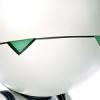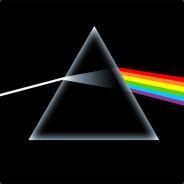On the subject of resources, I'm using a system whereby the various classes for game resources (such as the Level or Model class) can implement ResourceLoader.ILoadable
ResourceLoader = new ResourceLoader(@"C:\Program Files\Quake\ID1");Palette DefaultPalette = ResourceLoader.Load("gfx/palette.lmp");Level SomeLevel = ResourceLoader.Load("maps/start.bsp");This way the ResourceLoader can handle dragging data out of multiple pack (.pak) files or loading override files.
First things first - loading levels. This is nice and easy (unlike DOOM) - the .bsp files contain a list of vertices and a list of edges (each edge contains a start and end vertex index). For testing purposes, I used the Graphics class to draw out each level in 2D:

Next up, I create a point list and render those in 3D:

...and now the edges as a line list:

That seems to be on its side. Quake uses (x, y) as a 2D floor plan and z for height, so I need to swap z and y (and negate y whilst we're at it).

Quake uses faces for solid walls, which are simply convex polygons made up from lists of the aforementioned edges (and may have more than three sides). I'm creating a simple triangle list, and applying some fog to make the world look 3D (there's no lighting):


Texturing would make a welcome addition. Quake uses a rather novel texture coordinate system (at least, I've never seen anything quite like it) whereby each face references a TextureInfo structure, which contains the index of the texture itself, a pair of vectors indicating the horizontal and vertical axis (for aligning the texture against the surface of the face) and an offset in texels (so the texture can be aligned to the edges of the face). Fortunately, the BSP documentation I have indicates how to use this information to calculate the texture offset per-vertex, and by dividing by the texture's width and height I can get "conventional" texture coordinates.

The real Quake textures would be nice, I suppose. As I break up the faces into triangle indices, I group them by texture index. The final triangle list is made up of groups of triangles by texture, so that (for example) triangles 0 to 10 will be texture 0, triangles 11 to 14 will be texture 1, triangle 15 will be texture 2 and so on. I also maintain a list of which triangles use which texture, so to render I simply set the texture, draw a range of triangles from the single list, then move on to the next texture.




It's all pretty brute-force stuff at the moment, but it's still very fast on modern hardware. Next up will be lightmaps. [smile]






I like the 2D view :)
If you ever feel like it, you could add a 2D top-down map in a secondary monitor [smile]